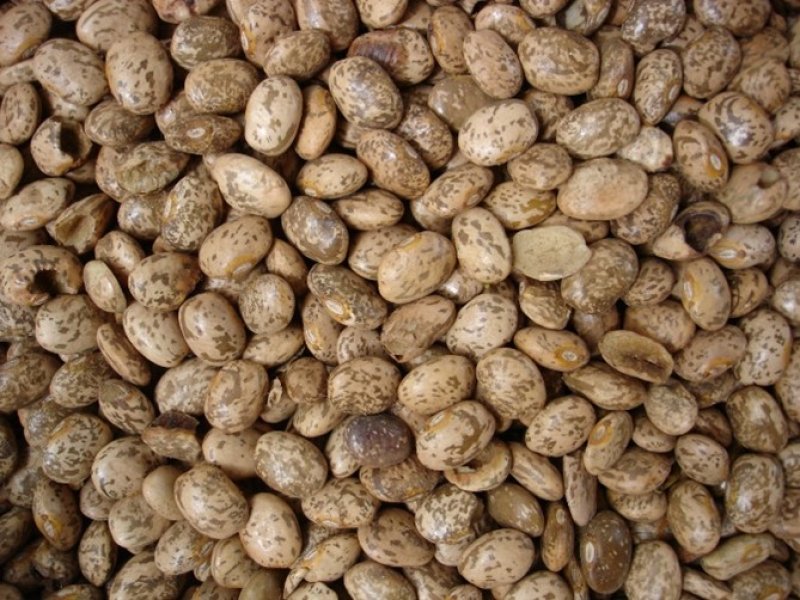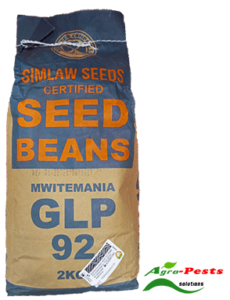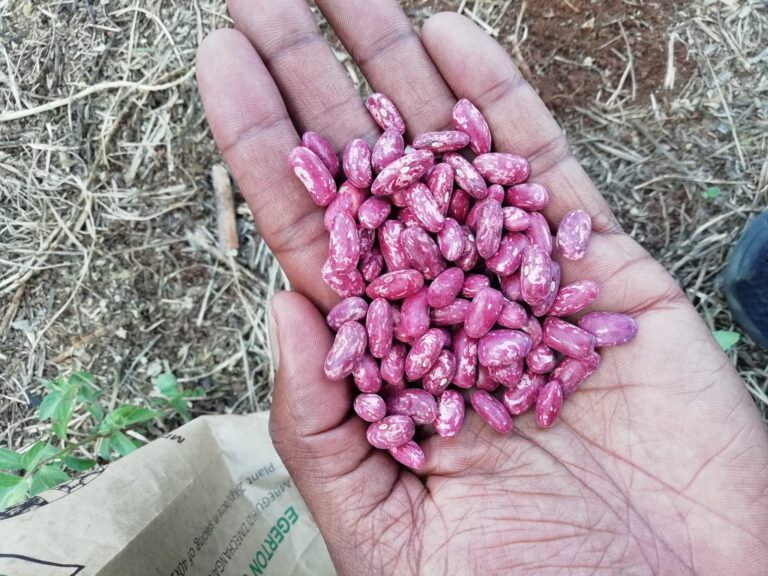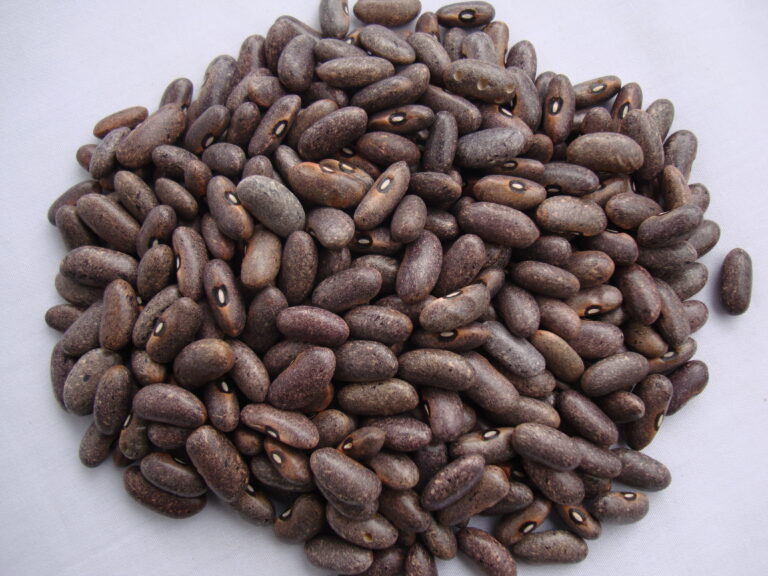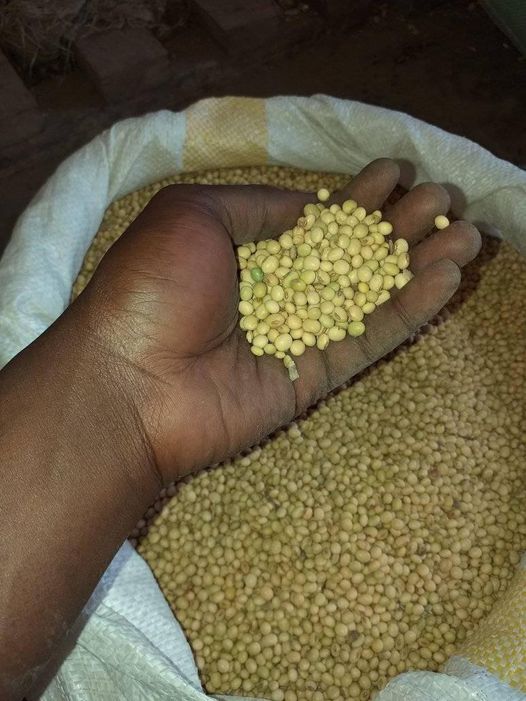Mwitemania (GLP92) Beans Yield Per Acre
Mwitemania (GLP92) beans are a high-yielding bean variety in Kenya, with yields typically ranging from 8 to 10 bags per acre under good management practices. It can yield up to 4 bags per acre when grown or inter-cropping with maize.
The variety is known for its drought tolerance and profitability for farmers.
Mwitemania is considered a high-yielding bean variety, with a yield potential of 8-10 bags per acre and a superior bean variety in terms of yield, compared to other local bean varieties like Rosecoco and Mwezi Moja. It matures in about 75 days.
The study recommended that farmers in Narok South, Kenya should focus on planting Mwitemania

Mwitemania Beans Price In Kenya
On average, Mwitemania beans are priced at approximately Ksh 120 to Ksh 150 per kilogram (about USD 1.10 to USD 1.37) in local markets. Prices may fluctuate throughout the year based on harvest cycles, weather conditions affecting supply, and consumer demand trends.
It’s advisable for farmers and traders to monitor market dynamics closely to make informed decisions regarding buying and selling Mwitemania beans.
Where To Buy Mwitemania Beans Seeds
Mwitemania bean seeds are available for purchase from various vendors in Kenya. Here are some options:
- Simlaw Seeds: Simlaw Seeds offers Mwitemania beans in 1 kg and 2 kg packs at prices ranging from KSh 420.00 to KSh 828.00.
- Kenya Seed Company Limited: Kenya Seed Company Limited sells Mwitemania .
- East African Seed Co. Ltd.: East African Seed Co. Ltd. offers Mwitemania beans at an unspecified price.
These vendors offer a range of options for purchasing Mwitemania bean seeds in Kenya.

Mwitemania Beans Farming in Kenya
Mwitemania beans farming in Kenya presents a promising opportunity for sustainable agriculture, contributing to food security, income generation, and soil fertility management.
It is highly profitable crop in Kenya, known for its high yield potential and drought tolerance
By employing appropriate farming practices and addressing challenges effectively, farmers can optimize yields and enhance their livelihoods.
Production Per Acre
Mwitemania beans are known for their high yield potential. On average, well-managed Mwitemania bean farms in Kenya can yield between 8 to 10 bags per acre.
Cultivation Practices for Mwitemania beans
Climate and Soil Requirements
Mwitemania beans are adaptable to a range of climates but perform best in regions with well-distributed rainfall and temperatures between 18°C to 25°C.
They grow well in loamy or sandy loam soils with good drainage and a pH range of 6.0 to 7.5. Proper soil preparation, including adequate organic matter incorporation, enhances yield and plant health.
Planting Mwitemania beans
- Seed Selection and Preparation: Start by selecting healthy seeds free from diseases and pests. It’s beneficial to treat seeds with appropriate fungicides to prevent seedling diseases.
- Planting Time: Mwitemania beans are typically planted at the onset of the rainy season to ensure adequate moisture for germination and early growth. In Kenya, this often falls between March to May for the long rains and September to November for the short rains, varying slightly by region.
- Spacing and Depth: Plant seeds at a depth of about 3-5 centimeters and space them 10-15 centimeters apart in rows that are 60-75 centimeters apart. This spacing allows the beans to climb and ensures efficient use of nutrients and sunlight.
- Crop Rotation: Practicing crop rotation is crucial to prevent soil-borne diseases and maintain soil fertility. Rotate Mwitemania beans with cereals like maize or sorghum, or with legumes such as cowpeas or soybeans.
Mwitemania Beans Crop Management
- Weed Control:
Weed management is essential during the early stages of growth when Mwitemania beans are particularly vulnerable. Manual weeding and mulching help suppress weeds and retain soil moisture.
- Water Management:
While Mwitemania beans are relatively drought-tolerant, consistent moisture is essential during flowering and pod formation stages. Supplemental irrigation may be necessary during dry spells to ensure optimal yield.
- Pest and Disease Management:
Common pests affecting Mwitemania beans include aphids, bean flies, and pod borers. Monitoring for early signs of infestation and using integrated pest management (IPM) practices such as biological controls and resistant varieties can mitigate pest damage. Diseases like rust and blight can be controlled through crop rotation, use of disease-resistant varieties, and fungicidal treatments.
Harvesting and Post-Harvest Handling
Mwitemania beans are typically ready for harvest within 75-90 days after planting, depending on environmental conditions and variety. Harvesting should be done when pods are mature but still green, as overripe pods may lead to seed loss during threshing.
Post-Harvest Handling: After harvesting, dry the beans thoroughly to reduce moisture content and prevent mold growth during storage. Properly dried beans should be stored in clean, dry containers in a cool, well-ventilated place to maintain quality and prevent insect infestation.
Benefits of Mwitemania Beans
- Nutritional Value: Mwitemania beans are rich in protein, dietary fiber, vitamins, and minerals essential for human health. They contribute significantly to food security and nutrition in households across Kenya.
- Income Generation: Commercial cultivation of Mwitemania beans offers farmers a reliable source of income, especially when integrated with other crops or livestock farming.
- Soil Improvement: Beans are leguminous plants that fix nitrogen in the soil, enhancing soil fertility and promoting sustainable agricultural practices.
Challenges in Mwitemania Beans Farming
- Pests and Diseases: Bean pests and diseases can significantly affect yield if not managed effectively through timely interventions.
- Weather Variability: Erratic weather patterns, including droughts and excessive rainfall, can impact crop growth and yield.
- Market Access: Access to reliable markets and fair prices for beans can be challenging for small-scale farmers.
